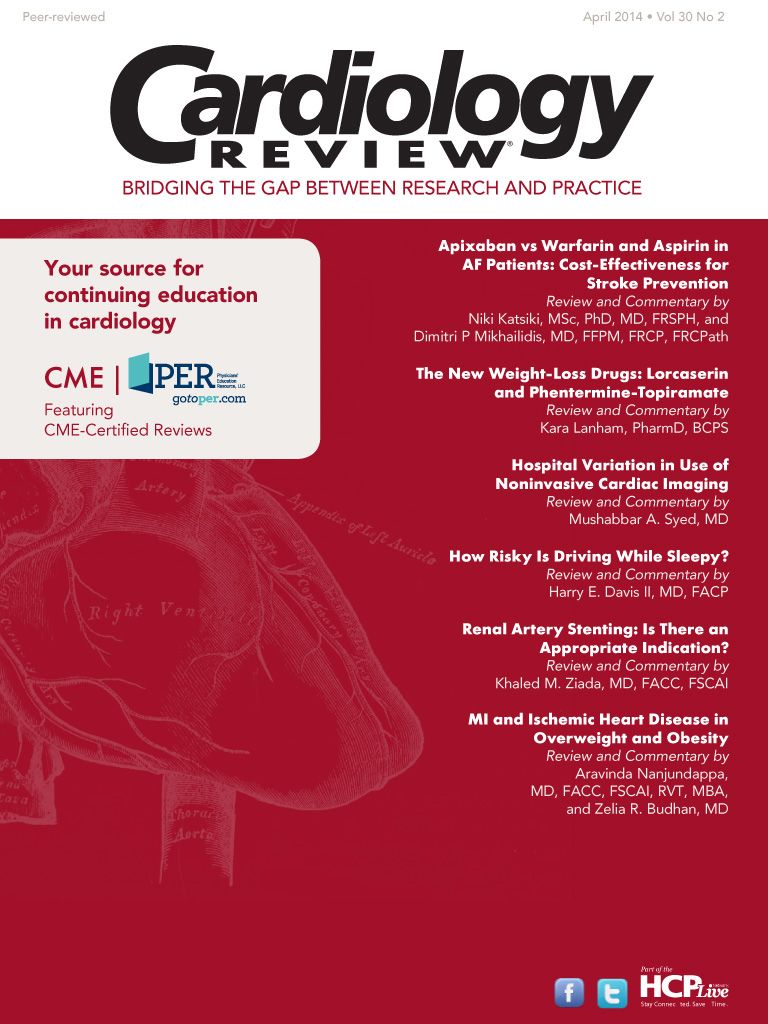Publication
Article
Cardiology Review® Online
Updated Guidance Issued on Valvular Heart Disease
The updated valvular heart disease guidelines issued by the American Heart Association and American College of Cardiology now incorporate transcatheter aortic valve implantation, which is now recommended for patients who are not candidates for surgery and would be expected to survive longer than 1 year after intervention.
Updated Guidance Issued on Valvular Heart Disease
The updated valvular heart disease guidelines issued by the American Heart Association (AHA) and American College of Cardiology (ACC) now incorporate transcatheter aortic valve implantation (TAVI), which is now recommended for patients who are not candidates for surgery and would be expected to survive longer than 1 year after intervention. Surgical valve replacement remains the recommended treatment option for patients with severe aortic stenosis and a low/ intermediate surgical risk.
The updated guidelines are the first recommendations for aortic stenosis, mitral regurgitation, and other adult valvular heart diseases from the AHA/ACC since 2008. It was published in Circulation and the Journal of the American College of Cardiology and can be accessed at http://circ.ahajournals.org/content/early/2014/02/27/CIR.0000000000000029.full.pdf.
The guidelines say that TAVI is a reasonable alternative to surgery for patients who have an indication for aortic valve replacement and a high surgical risk. It is not recommended for patients with a comorbidity burden that would cancel out any expected benefit from correcting the stenosis.
A new addition to the guideline is the 4-category disease classification system that moves from “at risk” to “progressive” to “asymptomatic severe,” to “symptomatic severe.” The guide also contains a risk assessment tool for all patients being considered for intervention.
The updated recommendations also lower the trigger points at which some patients should undergo intervention. For example, aortic valve replacement is recommended for asymptomatic patients with severe aortic stenosis and a left ventricular ejection fraction below 50% and is considered reasonable in asymptomatic patients with very severe aortic stenosis and a low surgical risk.
Dabigatran and Apixaban Approved for DVT Indications
The FDA approved apixaban (Eliquis) for the prevention of deep vein thrombosis (DVT) in adults who have undergone hip or knee replacement surgery.
The FDA also approved dabigatran (Pradaxa) for the treatment of DVT and pulmonary embolism (PE) in patients who have been treated with a parenteral anticoagulant for 5 to 10 days. It was also approved to reduce the risk of DVT/PE recurrence in patients who have been previously treated.
What Are the Top 5 Reasons Cardiologists Get Sued?
A recent analysis of closed-claims data from a malpractice insurer suggests that the top reason cardiologists get sued relates to problems with diagnoses: failure to make one, making the wrong one, or taking too long to arrive at one. The conclusion is based on information from the Doctors Company, a physician-owned malpractice insurer that examined 429 cardiology claims from 2007 through 2013. The claims were analyzed by Sandeep Mangalmurti, MD, JD, a cardiologist at Bassett Medical Center in Cooperstown, NY.
The breakdown as reported by the company is that 25% of claims were related to the diagnosis-related issues mentioned. The next-highest reason for claims was improper management of treatment (14%), which relates mainly to how well a practice standardizes processes of care such as hand-offs of information from doctor to doctor at a shift change and protocols for follow-up of test results. Improper performance of a treatment or procedure (12%) and improper performance of surgery (11%) are the third- and fourth-highest reasons for claims. Dr. Mangalmurti said some complications are inevitable, but he pointed out that the cases stem more often from the mishandling of the complication than the complication itself.
Improper medication management is the fifth-most common reason for a malpractice claim, especially with respect to anticoagulants, which are the cause of almost all medication- associated claims. Another problematic medication is amiodarone, Dr. Mangalmurti noted, because of side effects such as pulmonary fibrosis.
The bottom line is that solid communications between physicians and patients and patients’ families are key to avoiding malpractice claims. Fully informing patients and their families about potential risks that accompany treatment and procedures, along with a “sincere effort on the part of the physician to take responsibility for any problems that occur and try to find solutions,” would help decrease the risk of malpractice claims.
Source: Neale T. Top 5 reasons cardiologists get sued. Medscape. March 14, 2014.






